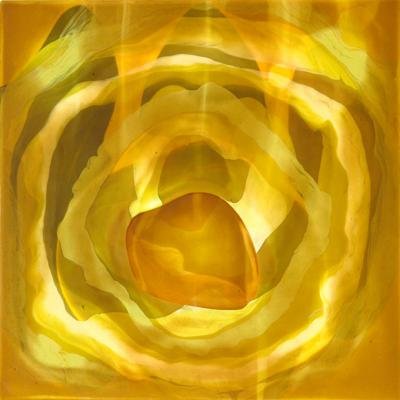Lynn McCarty
dal 11/1/2008 al 12/2/2008
Segnalato da
11/1/2008
Lynn McCarty
Nancy Hoffman Gallery, New York
Solo show. The artist builds a skin of paint on the aluminum surface using anything but brushes to pour the paint such as eye droppers, basters, towels, squeegees, her hand.

This is Lynn McCarty’s first solo show in five years and represents a leap forward for her. Still formal and what the artist terms “old-fashioned,” addressing issues of composition, line, color and texture, the paintings are infused with a new atmosphere. Gone are the veils of color replaced by bolder statements. White is used throughout the new pieces as color or shape, as background or foreground. White is the layer McCarty uses to build up the surface of each of her paintings, before adding other colors. The artist says of the new works, “there are no rules for these paintings, I am consistently inconsistent.” In each work she strives for something new, something challenging, some different visual vibration.
McCarty’s paintings range in scale from 12×12 to 60×60 inches. In each format the artist explores the dialogue of form within the parameters of the panel with command and grace, also showing a few non-square works of both horizontal and vertical format. While she approaches each piece as a “broad visual statement,” each is filled with naturally formed events suspended in moments of evolution, not unlike nature’s surprising geological wonders. Some paintings are edgy, containing amoeboid-like shapes quivering in a pool of limpid color, while others are radiant, appearing to emanate light from within, and finally some works have the merest suggestion of form, a whisper of shapes by the artist, a conversation between figure and ground. McCarty is more interested in “forming a form” than in describing a form, more interested in edges and contrasts. Edges are important--hard, soft or in relief, created by cutting through paint, which she pours, in thick shapes, perhaps a comment on human boundaries.
Often the forms seem sculptural, always physical, palpating with presence. New for the artist is a higher contrast between forms as well as a bolder, more graphic sense of form. Not miniature by any stretch of the imagination, the small panels command large space. With scale as with color, McCarty encourages us to reconsider our perceptions. Though these aluminum panels of unique framework and structure are clearly paintings, they float object-like on the wall.
McCarty’s commitment to the physical aspect of form is echoed by her interest in exploring what she calls “really simple things” such as edges, color, line, shape and space. McCarty builds elusive space through the vibration between opacity and transparency. The combination of universal painting considerations with the artist’s personal dichotomies (thick-thin, minimal-cluttered, soft-hard, bright-subtle) constitutes her unique coda. In this coda McCarty finds beauty, challenge, harmony, while never eschewing the opportunity for awkwardness or acidity, eager for a range of visual impact.
For the artist, color, now up a notch in intensity, is a primary “subject” of the painting filled with the artist’s personality, her moods, her ups and downs, her swings of life, and now, more than ever, her sensitivity to the environment, the landscape, clouds, shapes in the distance, striated rocks in the Grand Canyon. Her palette is broad and individ-ualistic, ranging from colors connected to the earth, to ethereal color juxtapositions.
Unique too is McCarty’s technique, or process. The artist builds a skin of paint on the aluminum surface using anything but brushes to pour the paint such as eye droppers, basters, towels, squeegees, her hand. Not a fan of brush strokes, she is interested in liquidity, in building elusive, sensual surfaces, varying in nature. While she used to sand between layers of paint to create a smooth surface, she now allows the layers to work together, creating a more varied surface, inviting the viewer into her shimmering universe, her range of drips, her crusting edges, like fissures in the earth.
Nancy Hoffman Gallery
429 West Broadway - NY



